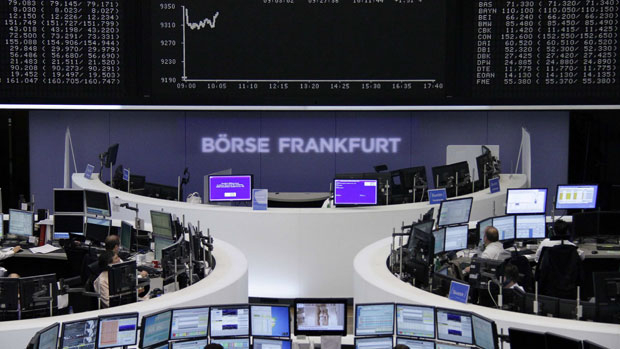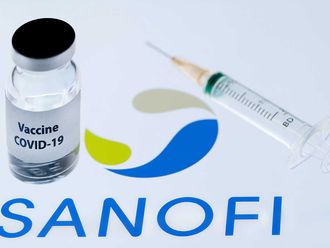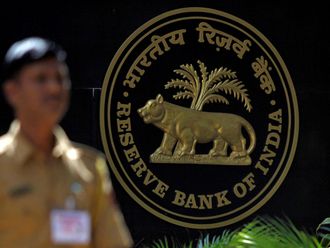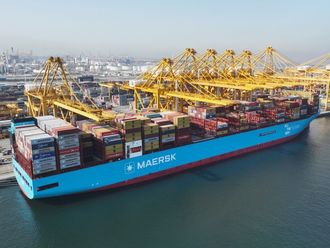
LONDON: European equities advanced while the dollar paused after a sharp rally last week as forecast-beating US jobs data eased concerns about global economic growth.
Friday’s US nonfarm payrolls report fed speculation that the Federal Reserve will hike interest rates by mid-2015 and helped the dollar notch its 12th straight week of gains.
US stock index futures pointed to further gains on Wall Street on Monday as investors grow more confident in the strength of the recovery in the world’s biggest economy.
The upbeat US data contrasts starkly with the outlook in Europe, where German industrial orders posted their biggest monthly drop since 2009 in August. That strengthened the view that the European Central Bank will eventually have to launch a Fed-style asset-buying scheme known as quantitative easing to support growth.
That added to the allure of European equities and euro zone bonds, which had stumbled last week after the ECB gave no fresh hints of imminent QE.
The FTSEurofirst 300 index of top European shares was up 0.4 per cent, led by German equities as Frankfurt, closed for a public holiday on Friday, caught up with the rebound in the rest of Europe.
US stock index futures pointed to an extension of Friday’s rally when the S&P500 index posted its best day since August.
As of Friday, the S&P500 was about 2.2 per cent away from its record close.
“The key question will be whether the strength of the recovery is enough to mitigate the risks of a rise in US rates in the first part of next year,” said Michael Hewson, chief strategist at CMC Markets, “or whether we start to see a plateauing of valuations as markets start to factor in the effects of events in Europe and China on US companies’ export expectations.” The dollar’s climb since early July is its longest ascent in more than 40 years. The jobs report highlighted the strength of the United States relative to several other major economies, whose sluggishness has raised doubts over the strength of the global recovery.
The US currency paused on Monday. The dollar index, which tracks the greenback against six major currencies, was down slightly at 86.476, not far from a four-year high of 86.746 hit on Friday.
The euro edged up 0.2 per cent to trade at $1.2558, having fallen to $1.25005 on Friday, its lowest level in more than two years.
Against the yen the dollar was within touching distance of levels not reached since before the 2008 financial crisis, but it cooled off in holiday-thinned Asian trading.
ECB OUTLOOK euro zone bond markets were focused on the darkening economic outlook in the currency bloc, which has reignited speculation the ECB will have to embark on QE in coming quarters to revive inflation and the economy.
German industrial orders fell 5.7 per cent on the month, undershooting expectations of a 2.5 per cent drop.
“Looking at these data now and the dynamics that we’ve seen over the past couple of months, they are pointing to a scenario where QE will be invoked at some point,” said Elwin de Groot, senior market economist at Rabobank.
German 10-year bond yields, the benchmark for euro zone borrowing costs, fell 2 basis points to 0.91 per cent — just 4 bps away from their record lows. They had touched 0.95 per cent after the ECB meeting. All other euro zone bond yields fell 2-3 basis points.
Commodity prices came under pressure from the dollar’s relentless rise.
Gold hit a 15-month low of $1,183.46 per ounce before recovering slightly to last trade at $1,194.35. Bullion has dropped 11 per cent from its July high of $1,345.
Brent crude oil prices rose towards $93 a barrel, stabilising after sharp falls last week on the back of a strong dollar, weak demand and ample supply.
Brent fell nearly 5 per cent last week, its steepest decline since April 2013 and earlier on Monday dropped to $91.98 per barrel, threatening to fall below a 27-month low of $91.48 hit on Friday.
Among emerging markets, investors may focus on Brazil, which faces a run-off presidential election on October 26 after leftist President Dilma Rousseff failed to score a big enough victory to settle the contest in Sunday’s first round. She will face pro-business rival Aecio Neves, who made a dramatic late surge into second place.
Over the past month, the Brazilian real and shares have tended to weaken when polls show Rousseff gaining, as many investors believe a more market-friendly administration could help boost demand for Brazilian assets.












